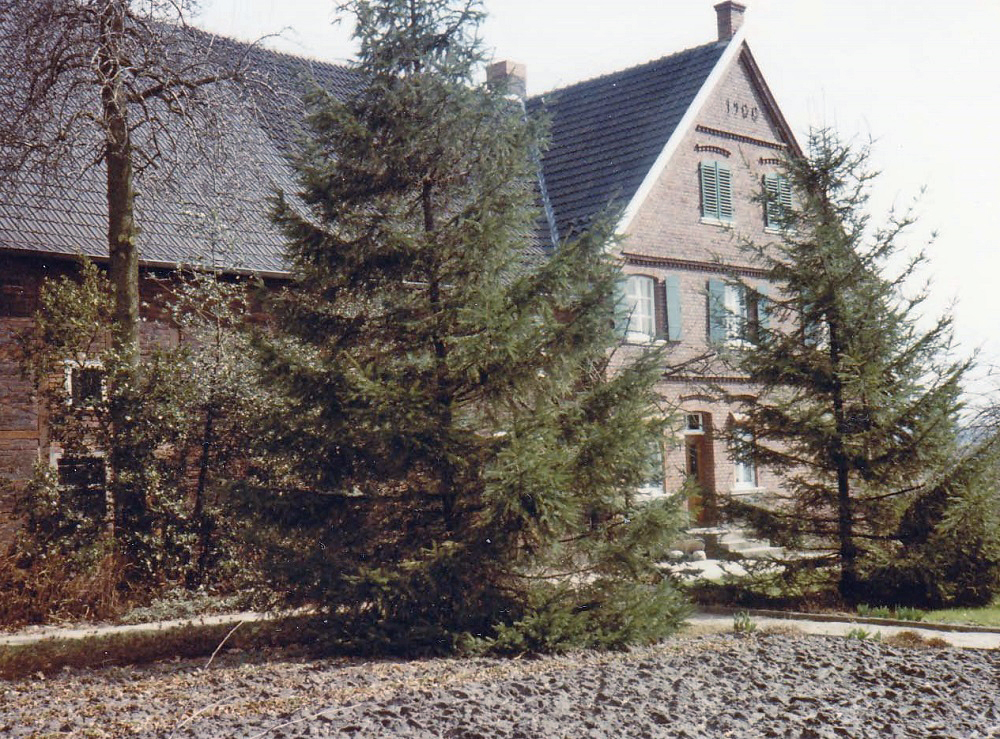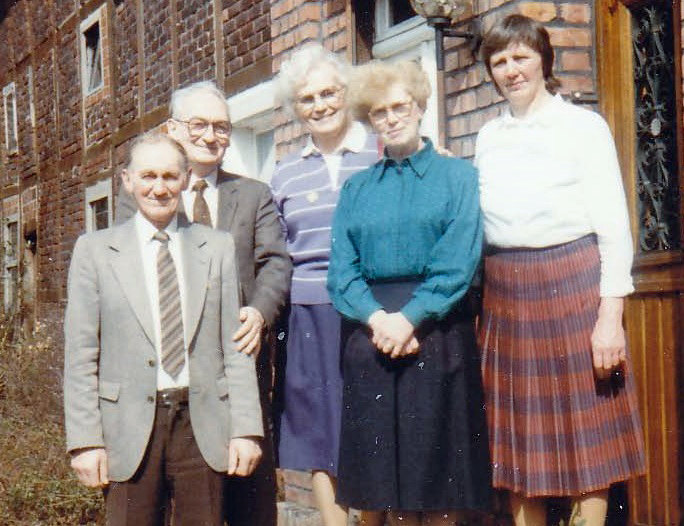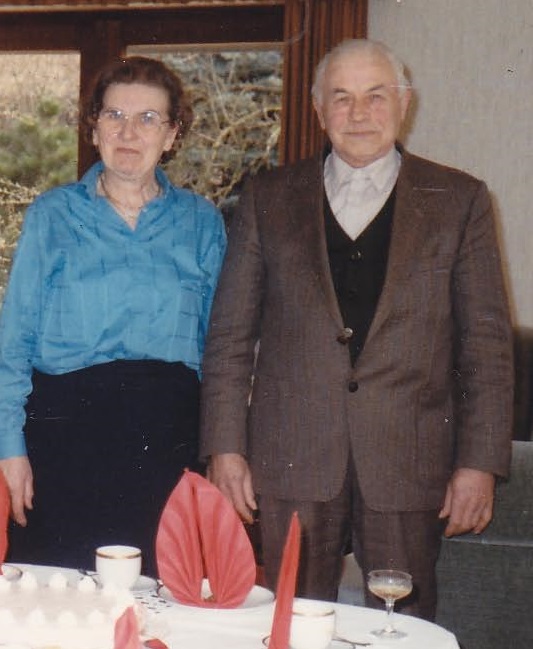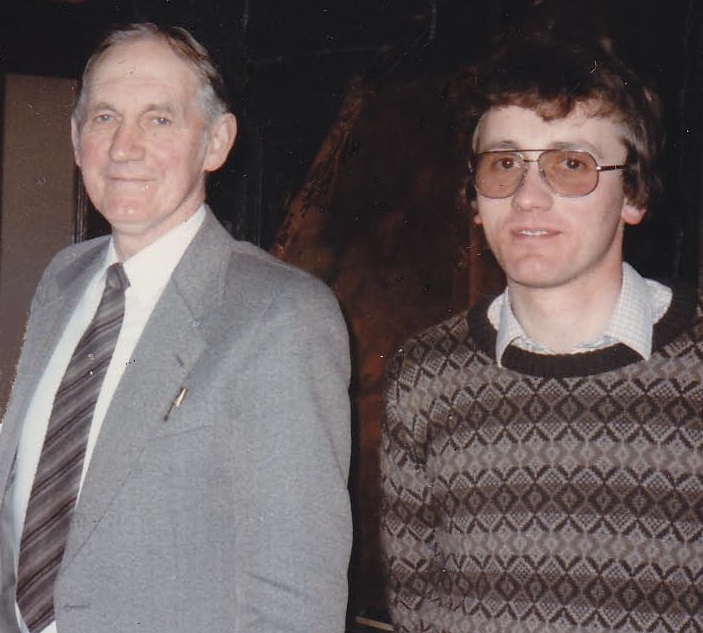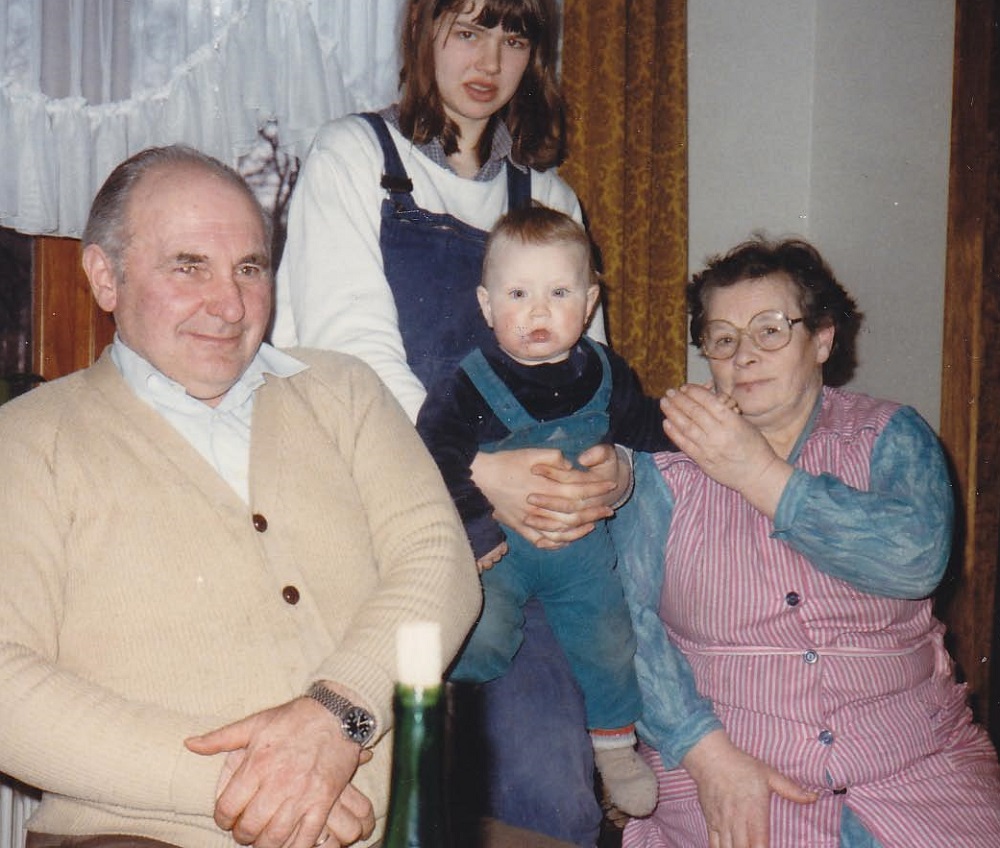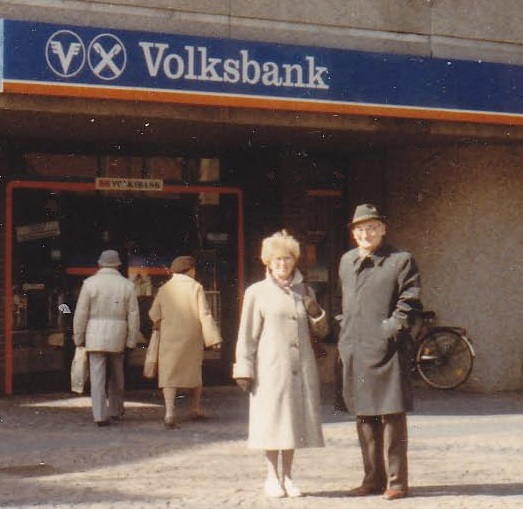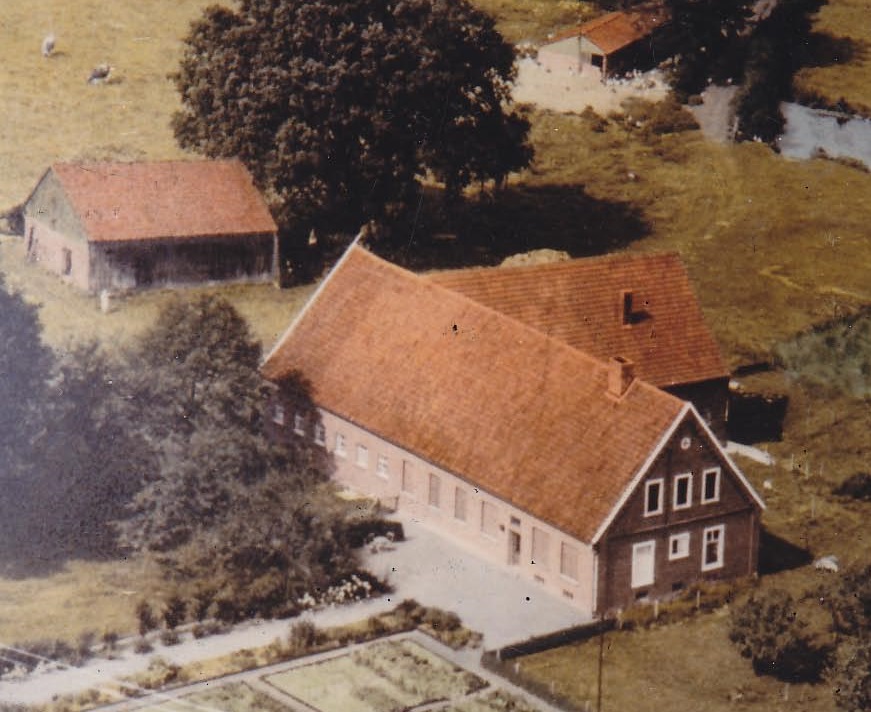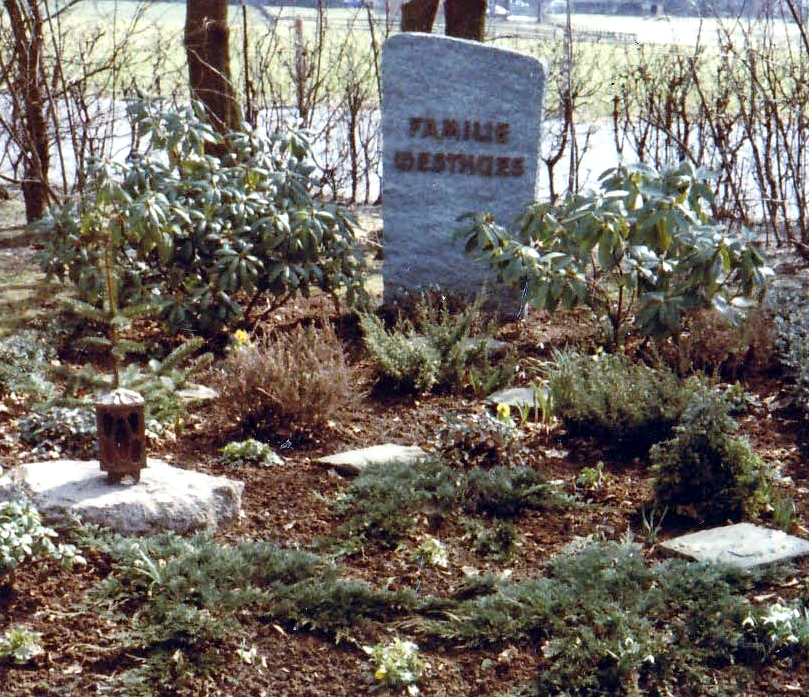|
|
In the middle of the 19th century, two brothers, Johan and Wilhelm Westhues, grew up together on the ancestral family farm in the hamlet of Horst, near Werne, along the Lippe River in Germany. They were wed the same year, 1878, Johan to Anna Maria Jurgens, Wilhelm to Theresia Peters. In the first months of 1880, each of these couples had a son, and each gave him the same name, Theodore, after Johan's and Wilhelm's father. One can imagine the two little Theodores, first cousins the same age, playing together at family gatherings in the 1880s.
In 1892, when they were twelve, the two boys were separated and never saw each other again. Wilhelm and Theresia moved their family to America, locating on a farm near Glasgow, Missouri. Their eldest son, the American Theodore, grew up, married Lena Moorman, bought a farm near his parents, raised five children, and lived there until his death in 1967. Meanwhile Johan and Anna Maria's son, the German Theodore, remained on the Westhues homeplace at Horst, married Antonia Zucker, raised four children, and lived there until his death in 1962.
The two Cousin Theodores kept in touch throughout their lives, even in the midst of German-American enmity in the two world wars. Two sons of the American Theodore, Ted and Norbert, fought in Europe against Germany in WWII. The eldest son of the German Theodore, Franz, was captured by American troops while serving in the Wehrmacht and transported to America, a camp near Chicago, as a prisoner of war. Yet the ties of blood held firm.
In 1986, almost a century after the two branches of the family went separate ways, a daughter of the American Theodore, Mary Bernadine, travelled back to the homeplace in Münsterland.
She had joined the Cenacle Sisters in 1951. En route to a meeting of her religious community in Rome, she stopped to visit her late father's ancestral home. There she was welcomed by her second cousins, the four children of the German Theodore: Maria Hibbe, Franz, Ludger and Joseph. Ludger met her at the airport.
Many thanks to Sister Mary, now almost 95 years old and living in retirement at the Cenacle House in Chicago, for allowing reproduction here of some of the splendid color photos she took in 1986. Continued thanks to her also for the 60-page, cerlox-bound volume of family trees and history that she distributed in 1988.
|
